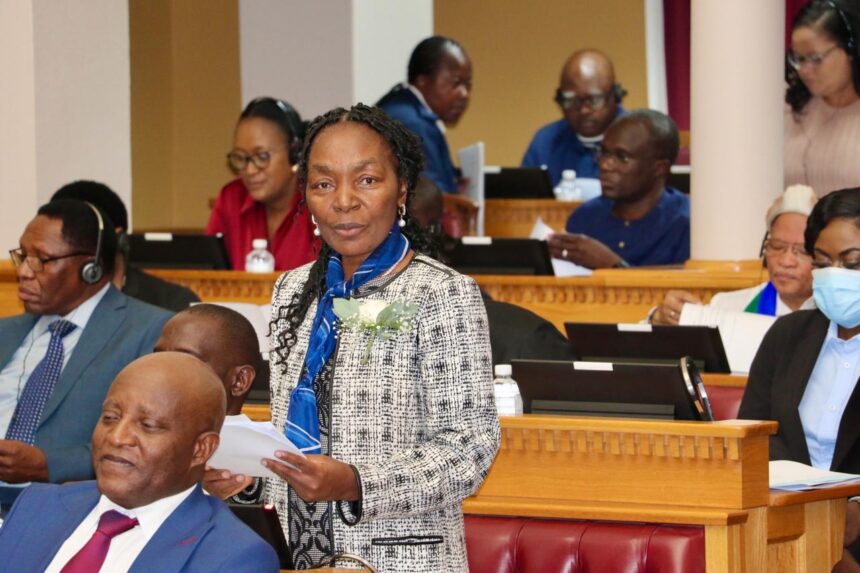Lahja Nashuuta
The Namibian government has allocated N$12.8 billion for development programmes and projects in the 2025/2026 financial year, part of the total N$106.3 billion national budget. Finance minister Ericah Shafudah confirmed that this allocation is a crucial step in advancing the country’s long-term growth and development goals.
The overall development budget for the 2024/2025-2026/2027 Medium-Term Expenditure Framework (MTEF) period has increased to N$31.1 billion, representing a 32.2% rise compared to the previous MTEF period (2023/2024-2025/2026), which had an indicative ceiling of N$21.1 billion.
This increase is largely attributed to allowing the government to complete the major ongoing projects under the National Development Plan 5 (NDP5) and the Harambee Prosperity Plan 2 (HPP2), both of which aim to stimulate economic growth and employment in key sectors such as transport, agriculture, health, education and water.
“The development budget will support 480 projects, including 461 ongoing projects and 29 new initiatives,” Shafudah said.
“79% of the N$31.1 billion will come from government funds, while 21% will be sourced from external funding. This budget represents 16% of the total national budget for the 2024/2025-2026/2027 MTEF period.”
She stated that the allocation is intended to tackle essential infrastructural needs, with the budget designated for acquiring capital assets such as buildings, land, heavy machinery, and technical equipment. Moreover, funds will be allocated to hire contractors and consultants for construction and renovation services.
“This budget is crucial for tackling social challenges by stimulating economic growth, generating employment opportunities and enhancing service delivery, thereby ultimately improving the living standards of our citizens,” added the minister.
The top seven ministries receiving the highest development allocations in this year’s budget include the Ministry of Works and Transport with 25%, the Ministry of Urban and Rural Development with 12%, the Ministry of Education, Innovation, Sports, Arts, and Culture with 9%, the Ministry of Health and Social Services with 7%, and both the Ministry of Agriculture and Land Reform and the Ministry of Defence, which each receive 6%.
72% of the total development budget is funded by the government, whereas 28% comes from development partners.
Among the key projects planned for this financial year are the construction of major roads, including the Windhoek-Okahandja, Windhoek-Hosea Kutako, Walvis Bay-Swakopmund, and Swakopmund-Henties Bay roads.
Additionally, the budget will support upgrades to the railway network and the implementation of community-based management infrastructure.
Other notable projects include the Water Supply Security Programme, veterinary services, land servicing for mass housing development, and the upgrading of schools, health facilities, and military bases nationwide. These initiatives are expected to impact Namibia’s economic growth and public service delivery significantly.
“For the first time, we have the largest development budget in the country’s history, which will significantly contribute to infrastructure investment, health system improvements, and educational facility upgrades,” said Kaire Mbuende, Director-General of the National Planning Commission.
He added, “It’s a balanced and sustainable budget that reflects our commitment to long-term growth.”
Mbuende further stated, “This budget aims to directly improve the lives of Namibians by ensuring investments are made where they matter most, such as in infrastructure, healthcare and education.”
Sharing a similar sentiment, Austin Samupwa, a Swapo Member of Parliament, expressed his approval of the budget. “I’m very impressed with what the Minister of Finance has presented. The focus on education, health, defence, and other social services is clear. This progressive budget will help citizens feel the impact of public investments in their daily lives.” -lnashuuta@gmail.com


